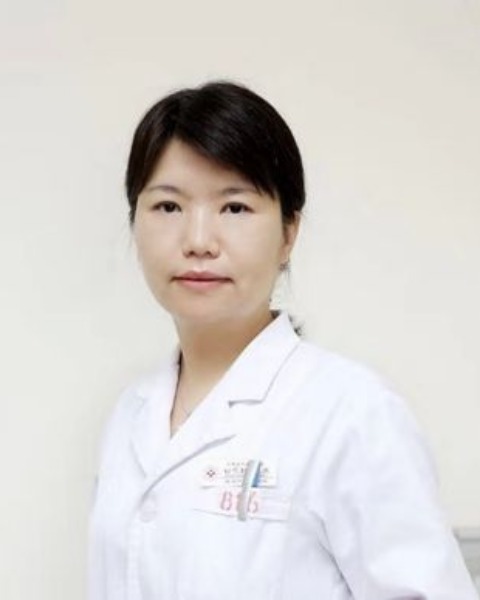Treatment of Newly Diagnosed Myeloma - Transplant Eligible
Poster Session 2
P-503: The prognosis of different efficacy depth in transplant-eligible newly diagnosed multiple myeloma (MM) patients in China——data of single center
Thursday, September 28, 2023
12:30 PM - 1:30 PM EEST

Aijun Liu
Professor
Beijing Chaoyang Hospital
Beijing, Beijing, China (People's Republic)
Introduction: Multiple myeloma is a common hematological malignancy, new drugs, new technologies improved patients’ survival, but still can ‘t be cured nowadays. We evaluated the prognosis of different efficacy depth in transplant-eligible newly diagnosed multiple myeloma (MM) patients in our hospital.
Methods: This retrospective real-world study, conducted in Beijing Chaoyang hospitals between January 2009 and December 2022, analyzed 656 transplant-eligible newly diagnosed multiple myeloma (NDMM). All of the patients received new drug-based introductive therapy, evaluated the remission at the end of introduction therapy, three months after autologous stem cell transplantation (ASCT) and the end of maintenance. Bone marrow minimal residual disease (MRD) was evaluated by next-generation flow cytometry (sensitivity of 10-5 cells) at 3month intervals in patients with complete remission (CR).
Results: The study enrolled 656 patients (median age: 54 years (24-69); male: 54.7%; ISS stage (I, II, III, unknown):21.32%, 29.91%, 44.02%, 4.75%. Cytogenetic stratification using metaphase fluorescence in situ hybridization (M-FISH), based on the Mayo Clinic risk stratification system, identified 28% as high risk (HR, 59/211) and 72% as standard risk (SR, 152/211). R-ISS stage (I, II, III, unknown): 11.04%, 37.12%, 8.90%, 42.94%. 75.2% of patients received ASCT.
With a median follow-up of 51 months from diagnosis (range, 6-117), the 36month progression free rate (PFS) of transplantation group to non-transplantation group is 68.15% to 32.17%(P=0.0001), the 36month overall survival rate (OS) of transplantation group to non-transplantation group is 84.29% to 47.76%(P=0.0001).
In transplantation group, overtall response rate (ORR) improved after transplantation, 40.23% of PR improve to CR/sCR (CR/sCR +MRD- 14.94%, CR/sCR 25.29%); 25.29% of PR improved to VGPR, 31.03% of PR were still PR. 43.80% of VGPR improved to CR (CR/sCR+ MRD- 15.70%, CR/sCR 28.10%), 47.11% of VGPR were still VGPR. In 150 patients who received next generation MRD estimation, the median PFS was not reached in the SR group, while the median PFS in the HR group was 45 months (P < 0.001). The 36month OS rates in SR group and HR group were 95.2% and 78.9%, respectively (P=0.001). In HR group, 36month OS rate of continuous MRD negative patients was 100%.
Conclusions: The NDMM patients who reached deep remission after transplantation obtained longer PFS and OS, especially patients who keep continuous MRD negativity.
Methods: This retrospective real-world study, conducted in Beijing Chaoyang hospitals between January 2009 and December 2022, analyzed 656 transplant-eligible newly diagnosed multiple myeloma (NDMM). All of the patients received new drug-based introductive therapy, evaluated the remission at the end of introduction therapy, three months after autologous stem cell transplantation (ASCT) and the end of maintenance. Bone marrow minimal residual disease (MRD) was evaluated by next-generation flow cytometry (sensitivity of 10-5 cells) at 3month intervals in patients with complete remission (CR).
Results: The study enrolled 656 patients (median age: 54 years (24-69); male: 54.7%; ISS stage (I, II, III, unknown):21.32%, 29.91%, 44.02%, 4.75%. Cytogenetic stratification using metaphase fluorescence in situ hybridization (M-FISH), based on the Mayo Clinic risk stratification system, identified 28% as high risk (HR, 59/211) and 72% as standard risk (SR, 152/211). R-ISS stage (I, II, III, unknown): 11.04%, 37.12%, 8.90%, 42.94%. 75.2% of patients received ASCT.
With a median follow-up of 51 months from diagnosis (range, 6-117), the 36month progression free rate (PFS) of transplantation group to non-transplantation group is 68.15% to 32.17%(P=0.0001), the 36month overall survival rate (OS) of transplantation group to non-transplantation group is 84.29% to 47.76%(P=0.0001).
In transplantation group, overtall response rate (ORR) improved after transplantation, 40.23% of PR improve to CR/sCR (CR/sCR +MRD- 14.94%, CR/sCR 25.29%); 25.29% of PR improved to VGPR, 31.03% of PR were still PR. 43.80% of VGPR improved to CR (CR/sCR+ MRD- 15.70%, CR/sCR 28.10%), 47.11% of VGPR were still VGPR. In 150 patients who received next generation MRD estimation, the median PFS was not reached in the SR group, while the median PFS in the HR group was 45 months (P < 0.001). The 36month OS rates in SR group and HR group were 95.2% and 78.9%, respectively (P=0.001). In HR group, 36month OS rate of continuous MRD negative patients was 100%.
Conclusions: The NDMM patients who reached deep remission after transplantation obtained longer PFS and OS, especially patients who keep continuous MRD negativity.
